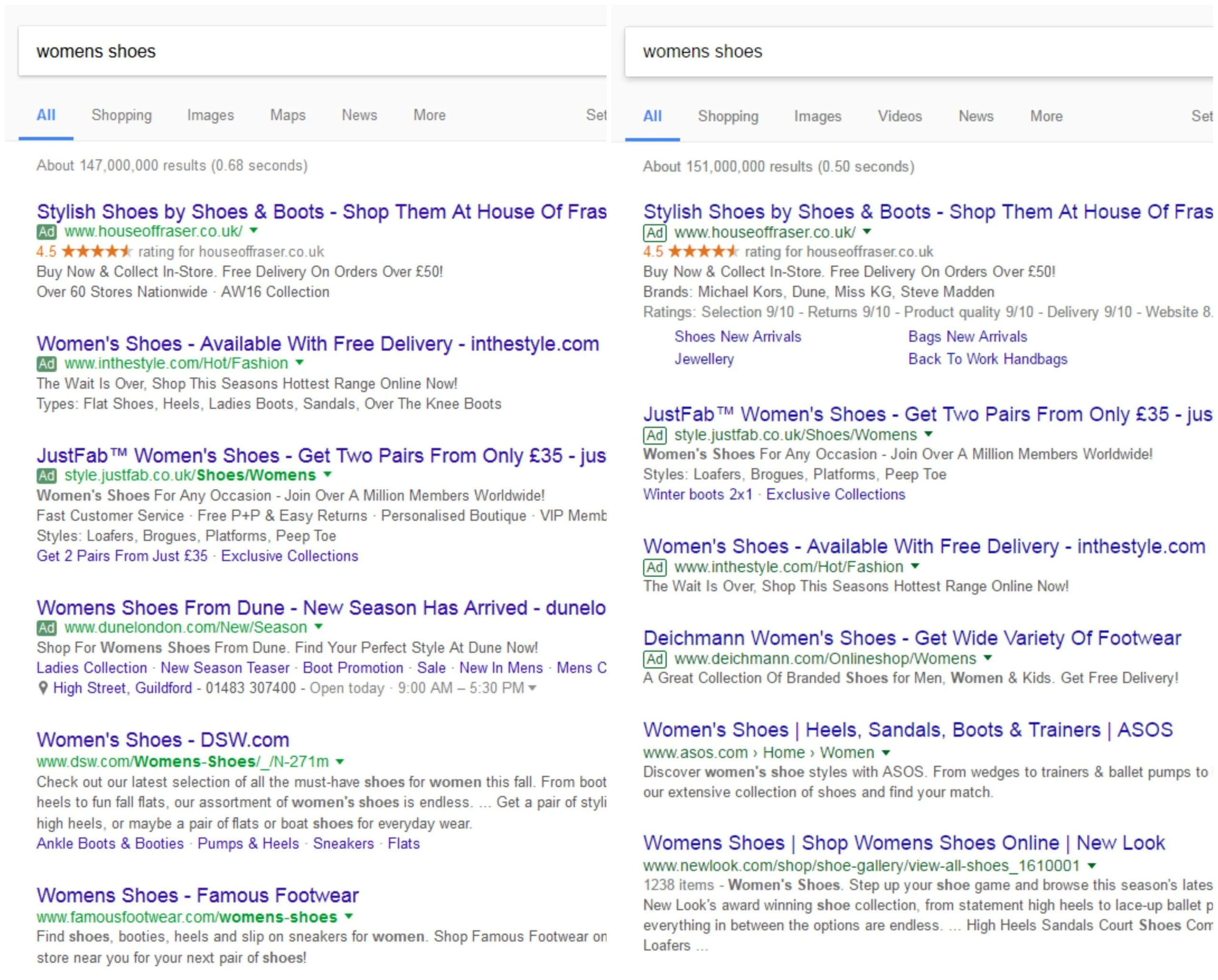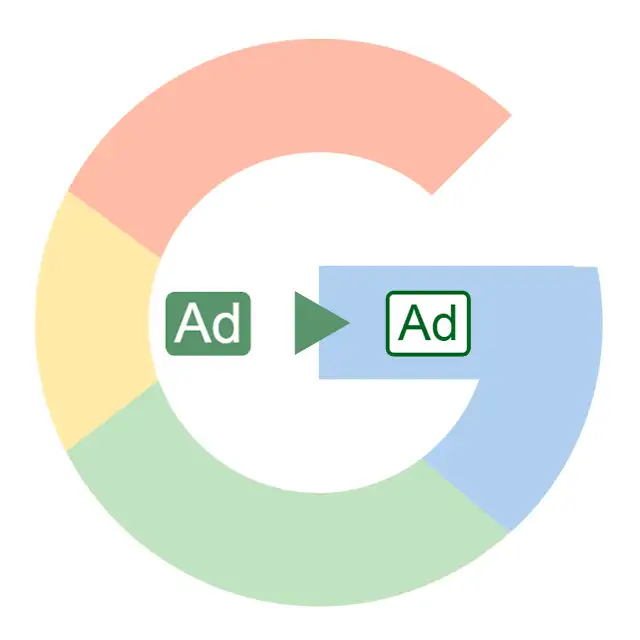Google is testing a new label for adverts once again, swapping the green “Ad” icon for a white one with green text. So far we’ve only spotted on desktop, this sneaky change helps ads look even more like organic search results. See the difference?

Last summer, Google changed the ad label to its current green icon. As a result of this change from a yellow icon to a subtler green one, click-through rates increased. Then, in January, eagle-eyed Googlers noticed that they were experimenting with black ad icons.

Positive for PPC
This change means good things for PPC. While there is no doubt that PPC works, there’s an impression that people don’t trust sponsored links. This move to even more subtle advertising is beneficial to PPC because we’re likely to see CTR on paid results improve further.
AdWords make up a whopping 70% of Google’s revenue. With so much of their money coming from ads, it’s no surprise they’re finding ways to get more clicks. Despite their massive revenue, ads are rarely clicked. A study by MEC Manchester showed that paid vs. natural result click distribution is 94% in favour of natural. People trust organic search and are suspicious of paid because the idea of “buying search results” must be indicative of an unworthy website. After all, if they were any good, they’d be in a natural search, right?
PPC helps fill the gaps your natural search cannot. Google makes these changes in order to maximise their AdWords revenue in an increasingly ad-unfriendly world. But as ads fill up more and more of the page 1 real estate, good SEO becomes all the more important. Google’s algorithm still favours the best practice SEO efforts digital marketers are making every day.
We predict that Google will find a happy middle ground between paid and organic search. In the past, when Google has gone too far they temper the situation and pull it back. They did this when people complained about the changes Google made by adding banner ads to search results in 2013. They promised no “banner ads on the Google homepage or web search results pages. There will not be crazy, flashy, graphical doodads flying and popping up all over the Google site. Ever.” And then went and did it anyway. This is just another swing towards the paid end of the search swingometer.
Google is changing its SERPs all the time. You may have noticed that emojis have returned to search results.
We explored the impact on emojis on digital marketing in a recent blog.






